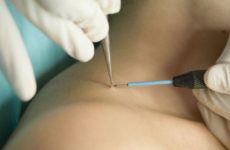Содержание:
- 1 Introduction
- 2 Causes of neoplasms on the lower or upper eyelid
- 3 Symptomatic manifestations
- 4 Varieties of formations
- 5 Photo of formations
- 6 Is there a danger from growths on the eye?
- 7 Diagnostic measures
- 8 How to remove a neoplasm at home and is it worth it?
- 9 How to get rid of in the clinic?
- 10 Possible Complications
- 11 Preventive measures
- 12 Conclusion
Introduction
Papilloma on the eyelid is one of the manifestations of the human papillomavirus, which looks like a small growth or several neoplasms. Since in most cases the disease causes a cosmetic defect and brings discomfort to a person, removal of the papilloma is recommended.
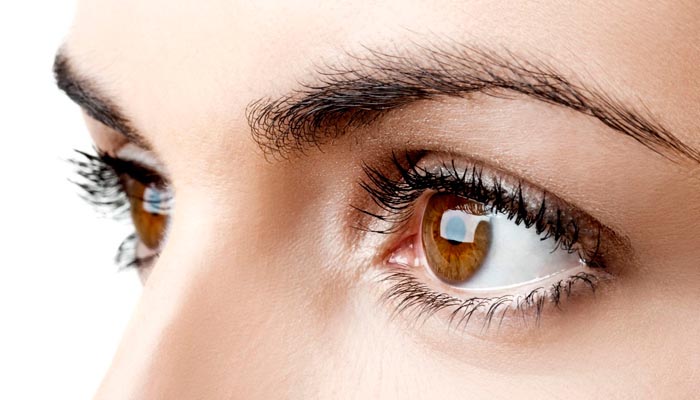
Causes of neoplasms on the lower or upper eyelid
The cause of the development of neoplasms is the papillomavirus, which is most often transmitted sexually, less often by household contact, by touching a sick person. In addition, you can become infected if you wipe your eyes with dirty hands, use other people’s personal hygiene items. The disease is also transmitted from mother to newborn child. In this case, the formation of growths is very slow, they begin to cause discomfort already in adulthood.
The virus can be asymptomatic in the body for a long time, and certain factors contribute to its manifestations in the form of growths on the body:
- psychosomatic disorders;
- decreased immunity;
- mechanical or chemical injury to the skin, mucous membranes;
- dermatological diseases;
- systematic overwork, stress;
- unbalanced diet;
- hypothermia;
- constant exposure to ultraviolet rays.
Symptomatic manifestations
Papilloma can develop in any part of the eyelid and at first have the appearance of a seal, the same color as the skin. Over time, the growth becomes clearly visible, often it takes on a different shade and causes certain changes in a person’s sensations:
- slight itching in the eye area;
- redness of the corners of the eyes;
- sensation of a foreign body;
- the upper eyelid does not fully open;
- irritability.
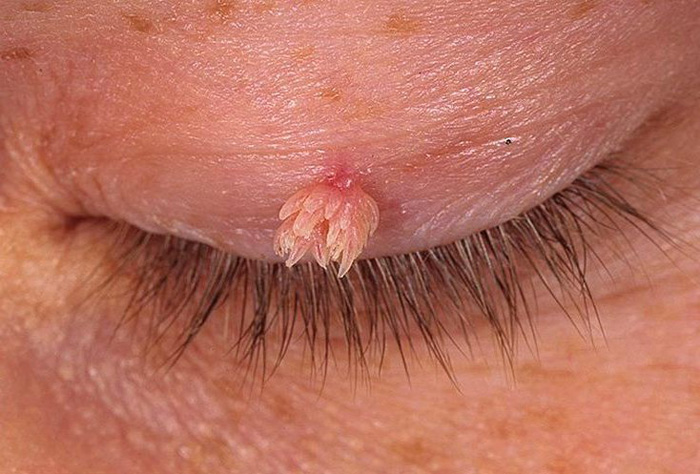
Varieties of formations
On the eyelid, both single and multiple growths can form. The latter, as a rule, cause more inconvenience and, without timely assistance, quickly increase their numbers, occupying more and more area of the century.
According to the intensity of growth, such papillomas are distinguished:
- low-oncogenic (grow slowly, are benign, easily treatable);
- highly oncogenic (developing rapidly, high risk of malignancy, require special treatment).
According to external signs, neoplasms are combined into the following groups:
- Vulgar . They look like small hardened calluses.
- Flat . Most often round or oval in shape, mainly develop in groups.
- Pointed . They have a wide base and sharp edges, grow quickly.
- Filiform . Growths that have a thin leg that is easy to damage.
Photo of formations
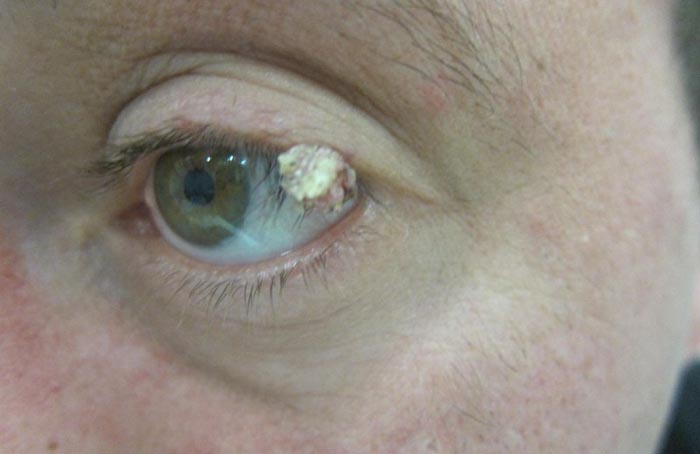
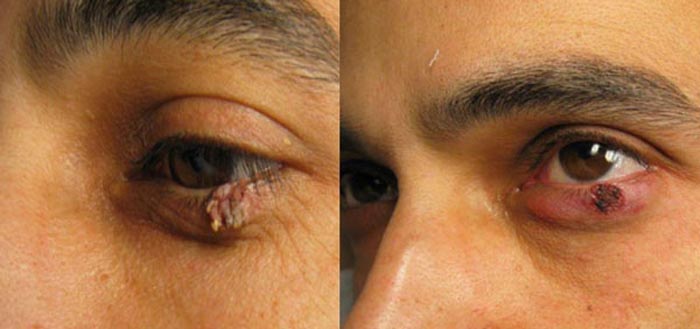
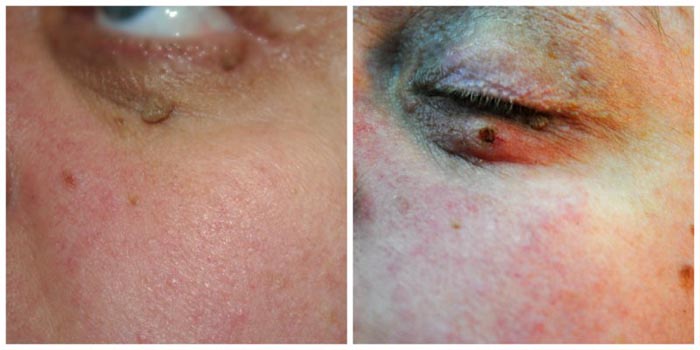
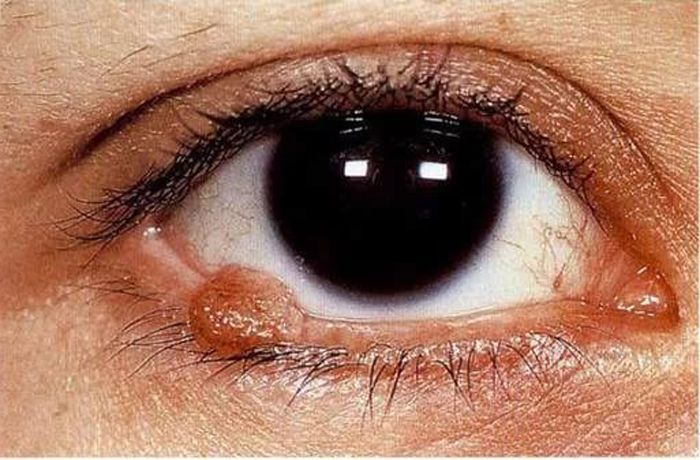
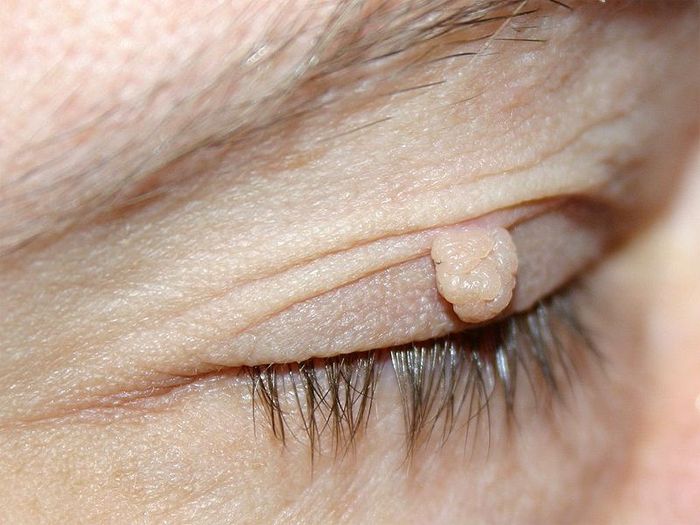
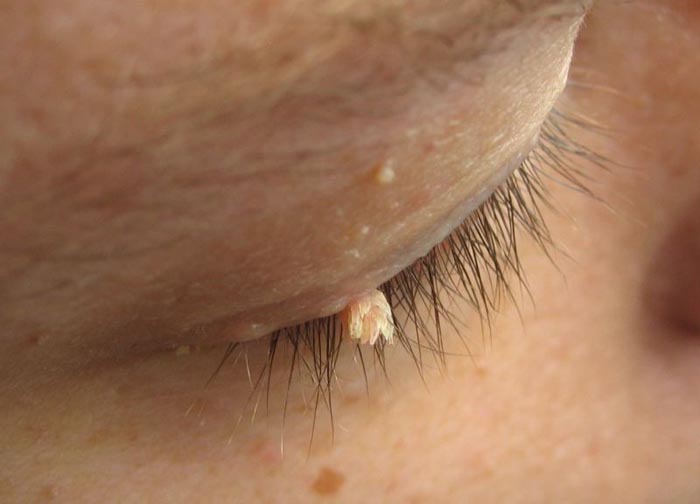
Is there a danger from growths on the eye?
Without proper treatment, papillomas on the eye increase in size and number. This leads to the fact that it becomes more and more difficult to carry out daily hygienic care of the organs of vision. It is difficult for a person to wipe his eye due to the fact that the neoplasm constantly clings to a napkin or towel. Often this causes damage to the growth, bleeding, harmful microorganisms get inside. In the absence of antiseptic treatment of such wounds, an infection develops.
Papilloma, located on the upper eyelid, makes blinking difficult and, as a result, worsens the washing of the mucous membrane of the eyeball. There is dryness or tearing, redness. Often there is an inflammatory process affecting the conjunctiva. This leads to the appearance of dangerous ophthalmic diseases, deterioration of vision.
Diagnostic measures
Venereologists and dermatologists are engaged in determining the presence of the disease. To begin with, the patient is examined for the presence of pathogenic neoplasms. Often a person does not feel them at all, the growths are noticed by an ophthalmologist or therapist during a routine examination. Diagnosis of the disease consists of several main stages:
- Anamnesis.
- PCR examination to determine the presence of the virus in the body.
- Clinical blood tests.
- Biopsy for cytological examination.
- Blood test for tumor markers.
- Examination by a urologist or gynecologist to determine the extent of the spread of the virus.
How to remove a neoplasm at home and is it worth it?
At home, there are two ways to get rid of papilloma : non-traditional methods and with the help of pharmaceutical preparations. In the first case, plants such as celandine and aloe have a visible effect.
There are several proven recipes for papilloma:
- Celandine grass is crushed, compresses are made on the affected area, applying for a few minutes. For seven days, it is worth doing this every three hours, then twice a day for another week. After the compress, the eyelid is washed with water and a piece of dry cloth is applied to it for a few seconds.
- Walnut leaves in the amount of 50 g are poured with a glass of boiling water, left for 2-3 hours. The resulting tincture is applied to the growth 4-5 times a day for 2 weeks.
- Cut the aloe leaf lengthwise, attach to the sore spot and keep for a few minutes. Repeat the procedure daily in the morning and at bedtime for at least 14 days.
- A small amount of castor oil is applied to the papillomas and left for 15–20 minutes, after which the excess is removed with a clean cotton pad. Repeat daily for at least a week.
Among pharmaceutical products, drugs such as oxolinic ointment, viferon cream, panavir-gel have proven themselves well . They are applied to papilloma and left for the time specified in the instructions for use. It is necessary to avoid getting medicines in the eyes, and the procedure should be carried out only with clean hands. Usually you need to apply drugs no more than 3 times a day, the result will be noticeable after 2 weeks. Creams and ointments are effective only for small papillomas.
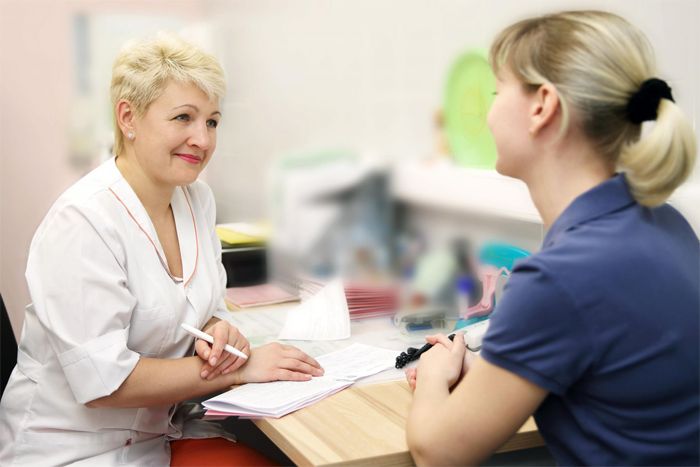
How to get rid of in the clinic?
Only a surgeon can determine the most successful way to eliminate papilloma. Not all patients are equally suitable for various types of operations, much also depends on the location of the papilloma on the eyelid . The closer to the mucosa it is placed, the more gentle the method will be recommended. The main ways to remove papilloma include:
- Traditional surgery . Currently rarely used due to the high risk of bleeding and the complexity of the operation. In addition, rehabilitation takes at least 3-4 weeks.
- Electrocoagulation . The procedure is difficult to perform due to the inability to control the depth of penetration of the instrument on the thin skin of the eyelid. Recommended for advanced cases and multiple growths.
- laser intervention . A simple procedure that does not require a long rehabilitation afterwards. The laser not only excised the base of the papilloma, but also cauterized small vessels, which makes bleeding impossible. Among the advantages is a low risk of infection.
- Cryodestruction . Destruction of formation tissues is carried out with the help of liquid nitrogen. The operation is quick, but recovery may take several weeks.
- Radio wave coagulation . A high-precision procedure that allows you to excise only damaged tissues, while not touching healthy ones. Complete healing takes no more than a week.
Possible Complications
The most common complications after getting rid of papilloma include infectious tissue damage, scarring, recurrence of growths, long healing, suppuration, visual impairment. In order to avoid these unpleasant phenomena, it is enough to follow the recommendations of the attending physician after surgery, in particular:
- Treat the wound with antiseptic agents, for example, hydrocortisone ointment twice a day. Please note that not all preparations are suitable for use on the eyelid .
- Hygiene procedures to be carried out in accordance with the recommendations of the doctor. For example, in many cases it is impossible to wet the seams for a certain time.
- Do not use an eye patch unless directed by a doctor. This can aggravate the resorption of the sutures.
- Take prescribed antibiotics or antivirals to speed up recovery.
- Go to the hospital immediately if the condition of the eyelid changes or if vision worsens.
- Follow the regimen and adhere to proper nutrition.
Preventive measures
You can avoid the occurrence of papilloma on the eye by adhering to simple rules:
- Strengthening immunity . Do not allow the weakening of the body, take complexes of vitamins and minerals.
- Proper nutrition . Saturate the diet with vegetables and fruits, meat and fish products.
- Healthy lifestyle . Giving up bad habits and playing sports significantly reduce the manifestations of papillomavirus.
- Day mode . Do not overwork, rest enough, avoid stress and excessive physical exertion.
- Disinfection . If any wounds appear in the eyelid area, immediately treat the skin with an antiseptic, avoiding contact with the eyeball.
- Hygiene . Use only personal hygiene items, thoroughly clean your eyes daily, avoid getting dirt in them. If you wear lenses, put them on with clean hands and store them in a special container.
Conclusion
Thanks to modern methods of surgical intervention, papilloma can be eliminated painlessly in a few minutes. And using folk remedies and pharmaceutical preparations, in just a couple of weeks, without the need for rehabilitation. To determine the most effective and safe way to eliminate neoplasms, you should consult a doctor.







